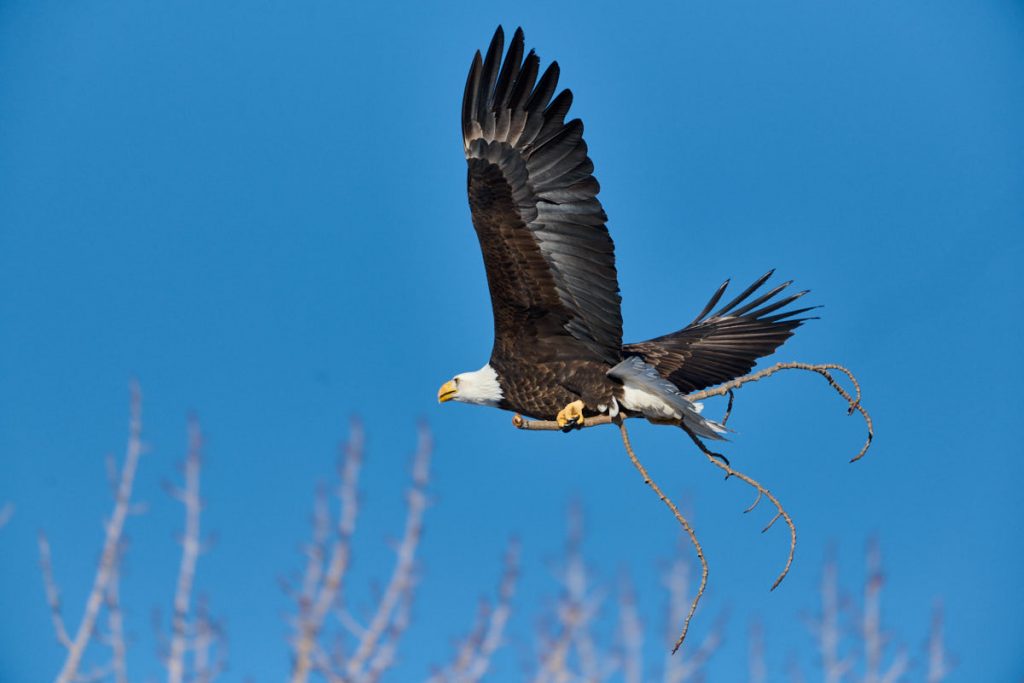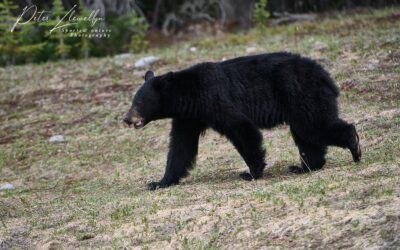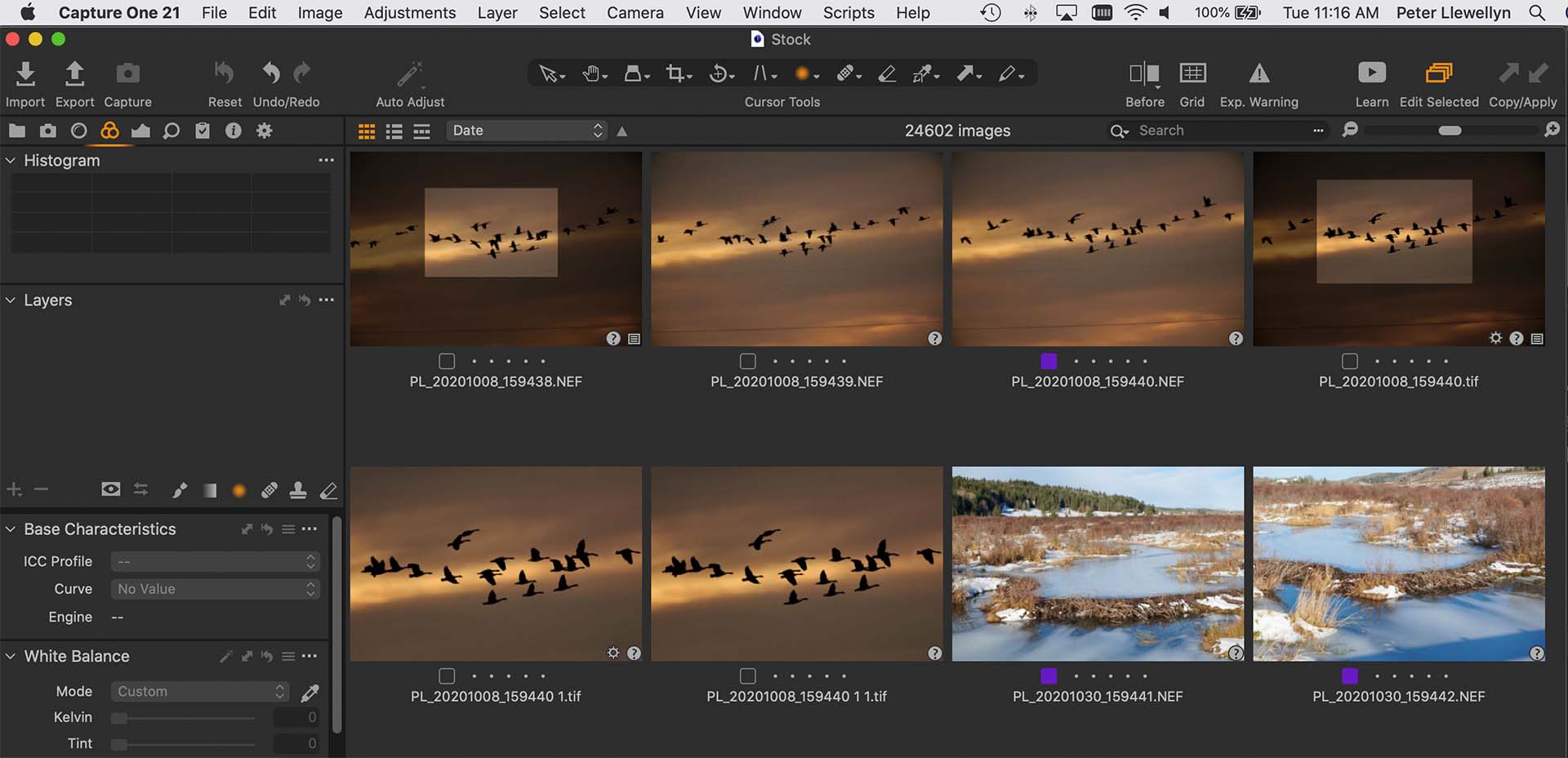Since the beginning of December I have been closely following two of these eagles as they build their nest in a tall cottonwood tree situated on a small island in the Bow river.

Bald eagle carrying nesting material, Carburn Park, Calgary, Alberta
Nikon D850, Nikon 500mm f4 lens on Gitzo tripod with Flexshooter head, 1/1600 sec @ f5.6, ISO 500. Exposure set manually with auto ISO selected
Baldies are among the first birds to begin the nesting process each year, often adding layer upon layer to nests from previous years until the nest can become too big for the tree to support.
Although regarded as a top predator, in fact bald eagles are an opportunistic hunter, regularly stealing prey from other birds, feeding on old carcasses. Scavenging roadkill, can prove disastrous as many are subsequently hit by passing traffic.

Two Bald eagle (Haliaeetus leucocephalus) feeding on a duck carcass on an ice flow in Bow River, Calgary, Alberta, Canada
Nikon D850, Nikon 500mm f4 lens with TC 14 converter (effective length 700mm) on Gitzo tripod with Flexshooter head, 1/3200 sec @ f6.3, ISO 400. Exposure set manually with auto ISO selected

Bald eagle (Haliaeetus leucocephalus) places a nest stick, Calgary, Carburn Park, Alberta, Canada
Nikon D850, Nikon 500mm f4 lens with TC 14 converter (effective length 700mm) on Gitzo tripod with Flexshooter head, 1/3200 sec @ f5.6, ISO 500. Exposure set manually with auto ISO selected
It is evident from sightings reported to e.bird.org run by the Cornell Lab of Ornithology, that numbers of bald eagles are on the increase, a far cry from being placed on the endangered species list in 1973 due to illegal hunting,, habitat destruction and the disastrous effects of DDT which caused the birds to lay non-viable eggs due to very this shells, a problem associated with the decline of many birds of prey around the same time.
Long may then continue to increase in numbers as it is always a thrill to see these birds soaring along the rivers and lakes of Canada.
Photography tips
Only adult bald eagles have the white head – forming in their third year. The big difference in dynamic range between the white head and the dark body means it is essential to get your exposure correct so as not to blow out the highlights on the white feathers. I generally choose to set the exposure manually but use auto ISO to compensate for changing light conditions. I generally set my auto IOS to go no higher than 2000 as this is the level at which the D850 begins to exhibit more noise than I find acceptable. Lower resolution cameras can tolerate much higher ISO

Bald eagle (Haliaeetus leucocephalus) in flight, Calgary, Carburn Park, Alberta, Canada
Nikon D850, Nikon 500mm f4 lens with TC 14 converter (effective length 700mm) on Gitzo tripod with Flexshooter head, 1/2000 sec @ f6.3, ISO 250. Exposure set manually with auto ISO selected
Bald eagles are big birds, which fly relatively slowly, making flight images quite easy. However a few things to be aware of. Because they are big they have a huge wingspan, (between 6′ to 7.5′) so watch your depth of field, it is very easy to get the wing tips out of focus so close down a stop or two to add that little bit of depth.




